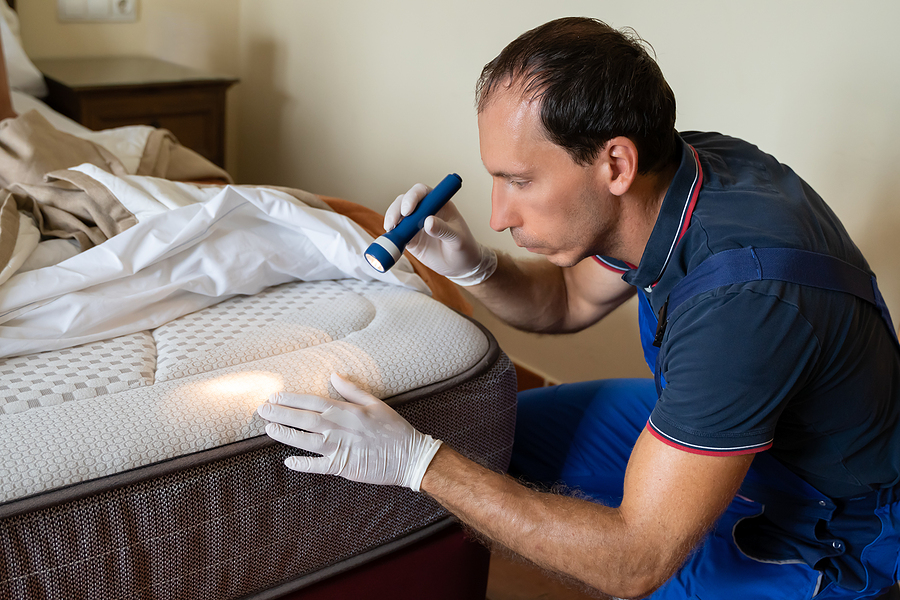Professional Bed Bug Exterminator Near Me: DC Exterminator Provider
Exploring the Scientific Research Behind Bed Bug Warmth Treatments as a Sustainable Bug Management Approach
In the realm of parasite management, the mission for efficient and sustainable services remains a continuous pursuit. One such technique that has actually acquired grip in recent years is the usage of warmth treatments to deal with bed pest infestations. By taking advantage of the science behind thermal death factors for these relentless insects, warm therapies use an appealing alternative to typical chemical-based approaches. The complexities of how warm effectively gets rid of bed pests and the broader ramifications for lasting pest management methods make this a topic worth discovering further.
Bed Pest Warmth Therapy Refine

Thermal Death Factor for Bed Bugs
Revealing bed pests to raised temperature levels past their thermal tolerance variety is important for accomplishing efficient elimination in warm treatment processes. By getting to and keeping temperature levels over the thermal fatality point for bed bugs, pest management professionals can make certain thorough removal of bed insect populations, including hard-to-reach areas where chemical therapies might be less effective. Understanding the thermal death factor for bed insects is important for applying effective heat treatment techniques and achieving sustainable parasite monitoring results.
Advantages of Heat Treatments
Having actually developed the important thermal death point for bed pests, it is critical to currently explore the significant benefits that warm treatments supply in efficiently eliminating these resilient bugs. When compared to traditional chemical techniques, heat therapies present a number of key advantages. One of the main advantages is that warmth can permeate deep right into fractures and holes where bed bugs conceal, guaranteeing that even one of the most hard-to-reach areas are heated to deadly temperature levels. This detailed approach not just eliminates live insects yet likewise targets bed pest eggs, preventing future invasions.
Additionally, warm therapies are safe and eco-friendly, making them a sustainable insect monitoring approach. Unlike chemical pesticides, warmth therapies do not leave hazardous deposits that can position threats to human health or the atmosphere. This element is especially crucial in sensitive atmospheres such as hospitals, institutions, and suburbs where chemical use might not be preferable.
In addition, warmth therapies have a high success price in getting rid of bed insect invasions in a single treatment, reducing the need for numerous visits and minimizing disturbance to owners. This performance not just saves time and money but also gives assurance to those taking care of bed insect problems.
Effectiveness of Warmth Therapy

Warm treatments have the included advantage of eliminating bed pest eggs, which are often resistant to conventional chemical treatments. Generally, the performance of warmth therapies in eradicating bed bug infestations makes them a reputable and sustainable parasite monitoring approach.
Lasting Parasite Monitoring Conveniences
Carrying out sustainable insect management techniques supplies long-lasting benefits for see post both the environment and public health. By making use of techniques such as warm treatments for parasite control, we can minimize like this the reliance on harmful chemical pesticides that can have damaging impacts on communities and human health - exterminator. Lasting insect administration strategies aid in protecting biodiversity by targeting certain insects without harming non-target microorganisms, therefore keeping a well balanced ecological community
Additionally, sustainable bug administration practices add to the total health and wellness of the public. By minimizing direct exposure to harmful chemicals made use of in conventional parasite control methods, warm treatments give a more secure alternative for insect monitoring in domestic, business, and public spaces. This reduction in chemical use additionally helps in stopping chemical residues from polluting air, soil, and water, protecting ecological top quality.
Conclusion
Finally, bed pest heat treatments have been revealed to be a reliable and sustainable bug monitoring strategy. The thermal death point for bed insects makes them at risk to warmth therapies, which have various advantages over standard chemical therapies. The performance of warmth therapies in eliminating bed bug infestations while minimizing environmental effect highlights the capacity of this technique as a lasting option for bug control.
The bed pest useful content warmth therapy procedure includes elevating the temperature level within ravaged locations to a degree that successfully removes bed pests and their eggs. By getting to and preserving temperatures above the thermal fatality factor for bed pests, parasite monitoring specialists can make sure detailed removal of bed insect populations, consisting of hard-to-reach locations where chemical treatments might be much less efficient. One of the primary benefits is that warm can permeate deep into cracks and crevices where bed insects hide, guaranteeing that even the most hard-to-reach locations are warmed to deadly temperatures. Unlike chemical treatments that might leave behind immune populations, heat treatments provide a non-toxic and environmentally pleasant remedy that can pass through deep into furnishings, wall surfaces, and other hard-to-reach locations where bed bugs hide.
The thermal fatality factor for bed pests makes them prone to heat therapies, which have many advantages over typical chemical therapies.